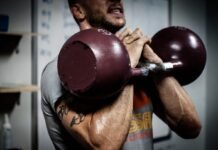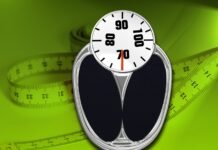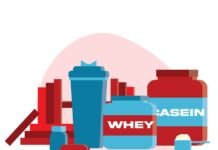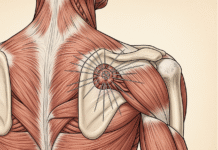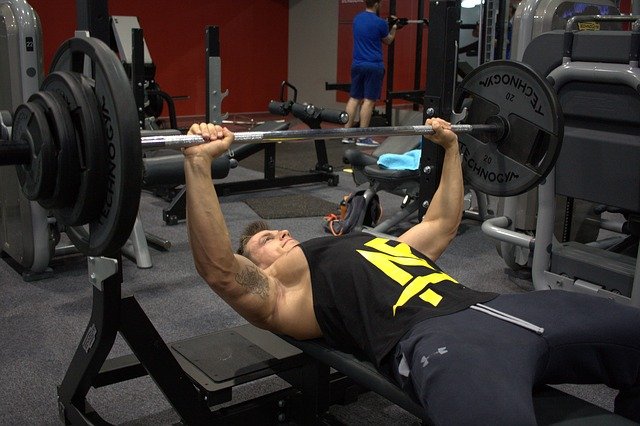There are many benefits to having a strong upper body that will give you more than just bulging biceps and well-defined pecs. Incorporating the upper body as part of a regular workout routine also improves posture, boosts metabolism, and strengthens the heart. With all these benefits and more, this article will help you get started with a great upper body workout for men.
Push-Ups
This staple upper body exercise should be a part of every man’s training program. Push-ups provide a great workout for the upper body targeting the triceps, pectoral muscles, and shoulders. With so many variations on the classic movement, you can find a style that suits you and then pushes you even further. When done correctly, push-ups also develop strength in the lower back and core through engaging the abdominals. A time-tested exercise that can be done anywhere, any time, and without any equipment, push-ups are a fast and effective exercise for building strength in the upper body.
Bench Press
The bench press is a core fundamental exercise for developing upper body strength as it uses virtually every muscle in this region. In all its variations, this movement targets the triceps, shoulder muscles, pectoral chest muscles and latissimus dorsi muscles in the back. Whether you’re a novice or a seasoned pro, this exercise should be part of your upper body workout regime.
Pull-Ups and Chin-Ups
Pull-ups and chin-ups are excellent bodyweight exercises for targeting your entire upper body. Both exercises involve pulling your body up from a stationary bar, with the main difference between them being how you grip the bar. With pull-ups, you grip the bar with your palms facing away from you. This makes them highly effective at targeting your back and shoulder muscles; a strong back is essential for other upper body movements such as the bench press.
The chin-up has you grasp the bar with your palms facing toward you – the opposite hold of a pull-up. The movement is straightforward but does require a great deal of strength. A chin-up uses your entire body weight, with a special focus on the front of your upper body and core, and as a result, is great for working your upper back and arm muscles, especially the biceps, forearms, shoulders, and latissimus dorsi.
Bicep Curls
Anything that requires upper body strength, from picking up your children to lifting heavy boxes requires strong arms, so there’s a good reason why this exercise comes to most peoples’ minds when they think of someone trying to build muscle and strength in their upper body. Your biceps brachii is a large, double-headed muscle running from your shoulder to your elbow and is the chief muscle involved in lifting and pulling with your arms. The humble bicep curl is one of the simplest exercise movements for gaining more strength and size in the front of the upper arm, and also the muscles of the lower arm and can be done in several variations with small tweaks in wrist position allowing you to target your arms and challenge your muscles from different angles.
Overhead Press
Arguably one of the best exercises to gain upper body strength, the overhead press develops the entire shoulder area, pectoral muscles, deltoids, triceps, and trapezius in the upper back. A foundational compound movement that is great for building the upper body and helping you in your other lifts, there’s a reason they call it the ‘military’ press!
Supplements
To truly maximize your upper body workouts, consider taking supplements to boost your efforts. A whey protein shake before your workout can help with athletic performance, muscle building, and fat loss. Creatine is another great way to build muscle mass and is the most beneficial supplement for building strength. It is responsible for supplying energy to cells within the body and can help you to increase your repetitions in a workout, boost your power and increase water retention in your muscles, which can help with muscle growth.
There is a strong correlation between vitamin D sufficiency and optimal muscle function. Essential for maintaining optimal health and fitness, it has been shown to improve athletic performance in vitamin D-deficient athletes. It is contained in dairy products and is also absorbed through natural sunlight, so it can be difficult to get enough of it in the darker, winter months. If you’re getting enough vitamin D from your diet and exposure to sunlight, you don’t need supplementation, but it may be worth checking your levels just in case.
Diet and Nutrition
Making sure you’re eating the right foods and getting the right nutrients to give you the energy you need to meet your fitness goals, is essential. It’s important not to neglect your nutrition when committing to a workout plan. By incorporating some strength-enhancing foods into your diet, you can maximize your workout efforts.
Carbohydrates provide the fuel you need, while protein is what rebuilds and repairs your muscles. Ideally, you should fuel your body one to three hours before your workout with foods that contain both protein and carbs. Choose something that is easy to digest and that won’t upset your stomach. Eating the right foods soon after you exercise can help your body rebuild its glycogen stores and repair and regrow muscle proteins, so it’s especially important to eat carbs and protein after your workout.
Stretching
Doing proper stretches before and after exercise is important for your body and can improve your workout, as well as reduce the risk of injury and tissue damage. Dynamic stretching before a workout can help your muscles, ligaments, tendons, joint capsules, and other tissues loosen up and prepare for exercise. With greater flexibility and range of motion, you are less likely to injure yourself or pull a muscle when you begin your workout.
Remember that post-workout stretching is just as important and can increase the benefits of your overall workout. As your muscles have been pushed to fatigue, lactic acid builds up which can lead to muscle soreness. Stretching can help reduce the accumulation of lactic acid throughout the body, which in turn reduces muscle inflammation and soreness.
Now you have all the essentials you need to begin your upper body training; have a good workout!

